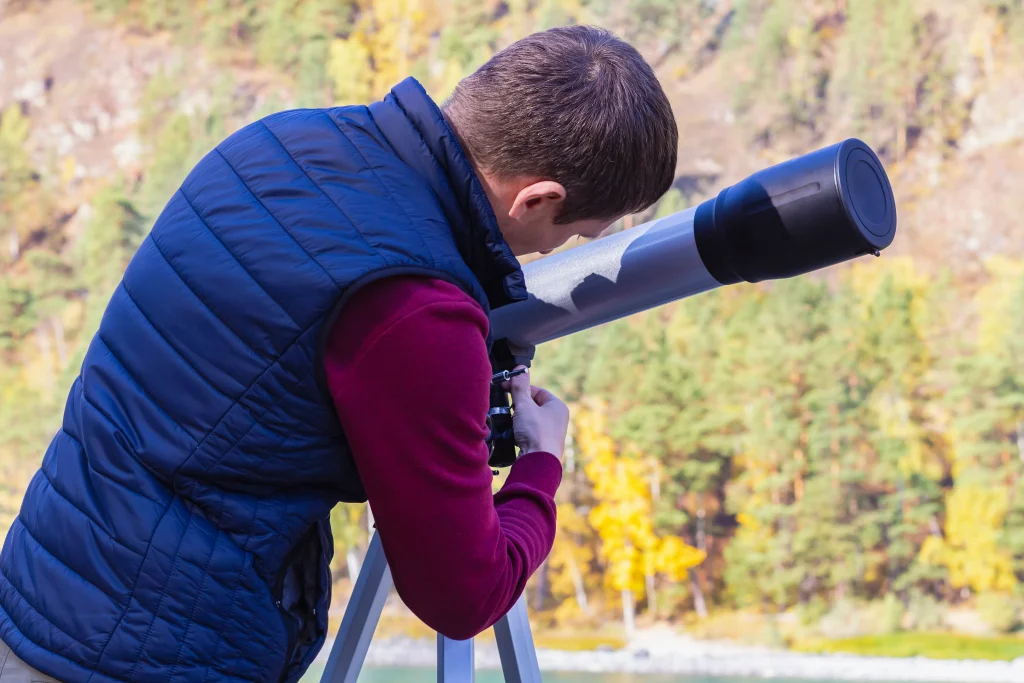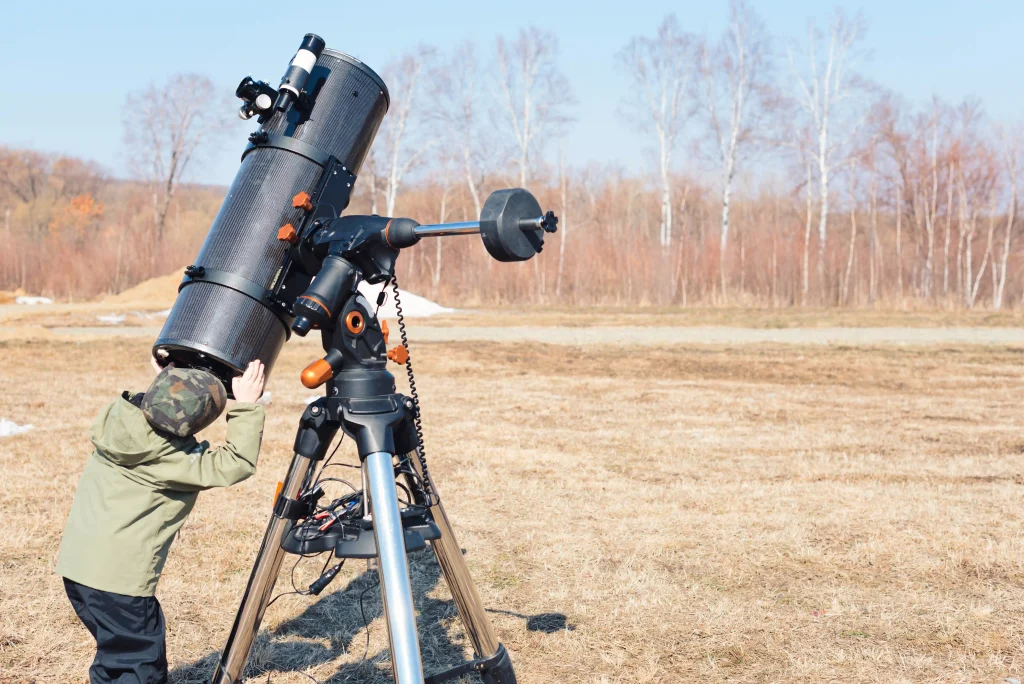No products in the cart.

Exploring the night sky is an enchanting experience, and at Colper, we love making stargazing accessible for everyone in Sri Lanka. One of the most popular tools for budding astronomers is the reflector telescope. Designed to gather and focus light using mirrors, reflector telescopes are ideal for observing planets, the Moon, and deep-sky objects. If you’ve been curious about the best way to start your astronomical journey, this guide will help you understand the basics, choose the right telescope, and enjoy the wonders of our solar system.
Understanding Reflector Telescopes
Reflector telescopes rely on mirrors rather than lenses to capture light. The primary mirror at the base of the telescope collects light and reflects it to a secondary mirror, which directs it into an eyepiece. This design allows large apertures at lower costs, making them perfect for beginners who want clear planetary views without spending excessively. Popular beginner models like the F70076 Reflector Telescope or Meade Polaris 130 216006 Reflector Telescope offer excellent clarity and stability for amateur astronomers.
One advantage of reflectors is their lack of chromatic aberration. Unlike refractor telescopes, which can produce color fringes around bright objects, reflectors provide sharper and more natural views of planets like Jupiter and Saturn. This makes them especially suitable for detailed stargazing, similar to the benefits highlighted in comparisons between reflector and refractor telescopes.

Choosing the Right Aperture and Mount
When buying a reflector telescope, two factors are critical: aperture and mount. Aperture, measured in millimeters, determines how much light your telescope can collect. For planet viewing in Sri Lanka’s skies, a minimum aperture of 114mm is recommended. Options like the 750/150EQ Reflector Telescope and 900/114EQ3 Reflector Telescope fall within this range, offering excellent planetary and lunar views.
The mount, which supports the telescope, is equally important. Equatorial mounts, like the 1000-114 EQ3 Reflector Telescope, allow for smoother tracking of celestial objects as they move across the night sky. Alt-azimuth mounts are simpler and ideal for casual stargazers, but equatorial mounts provide more precision—especially useful when exploring planets over longer periods. For a more detailed perspective, reflectors’ versatility is discussed when weighing them against refractors for stargazing in Sri Lanka.
Eyepieces and Accessories for Clear Views
A telescope is only as good as the accessories you pair with it. Eyepieces come in various focal lengths, affecting magnification. For planetary observation, low-power eyepieces (25–30mm) are ideal for scanning the Moon and larger planets, while high-power eyepieces (6–10mm) allow detailed views of Jupiter’s cloud bands or Saturn’s rings.
Some models, such as the F70076TX Telescope with plastic case and Meade Instruments Polaris 127 216005 Reflector Telescope, include multiple eyepieces and a sturdy case—perfect for beginners who want a complete setup. Additionally, filters can enhance views of planets by reducing glare and increasing contrast, making features like Saturn’s rings more distinct.
Setting Up Your Telescope in Sri Lanka
The key to enjoyable stargazing is proper setup. Start by placing your telescope on a stable, flat surface away from city lights. Light pollution can dramatically reduce the clarity of planetary views, so rural areas or coastal regions often provide the best stargazing conditions.
Aligning the telescope is crucial, especially for equatorial mounts. Start with a simple object, like the Moon, to fine-tune focus and orientation. As your confidence grows, tracking planets becomes easier, and you can explore advanced features like motorized mounts. Reflectors, particularly models such as the F800203EQIV Reflector Telescope priced at Rs 182,000.00, are robust and forgiving, making setup manageable even for beginners. The mirror-based design of reflectors complements tracking capabilities and long-distance viewing, an aspect often compared with refractors.

Observing Planets and Deep-Sky Objects
Once your telescope is set up, it’s time to explore. The Moon is an excellent first target—its craters and mountains are visible in incredible detail. Next, focus on bright planets like Jupiter, Saturn, and Venus. With a 127–150mm aperture reflector, even Jupiter’s moons can be observed as tiny points of light orbiting the planet.
Deep-sky objects, including star clusters and nebulae, are also within reach. While reflector telescopes excel at planetary observation, they are versatile enough for deep-sky exploration. Beginners often find it rewarding to combine visual observation with astrophotography, capturing the beauty of planets and nebulae with a camera attached to the telescope.
Caring for Your Reflector Telescope
A telescope is a long-term investment, so proper care is essential. Always store your reflector in a dry, dust-free environment, preferably in its original case, like the F70076TX. Avoid touching the mirrors, as oils and dirt can affect image quality. Cleaning should be done sparingly, using specialized kits designed for optical instruments.
Regular maintenance ensures that your telescope continues to deliver sharp, clear views of planets and deep-sky objects for years. At Colper, we emphasize the importance of proper handling, so you get the most from your investment. Reflectors’ lightweight mirrors and optical advantages make them durable and easier to maintain than refractors, a fact that often influences beginner choices.Exploring the cosmos is a journey that begins with the right telescope. Reflector models such as the F70076, Meade Polaris 130 216006, and F800203EQIV offer Sri Lankan stargazers an opportunity to enjoy stunning planetary views without compromising on quality. At Colper, we are committed to providing tools and guidance that help enthusiasts experience the wonders of the night sky. Whether you are starting with your first telescope or upgrading to a more advanced model, reflector telescopes remain a reliable choice for seeing planets and beyond.
